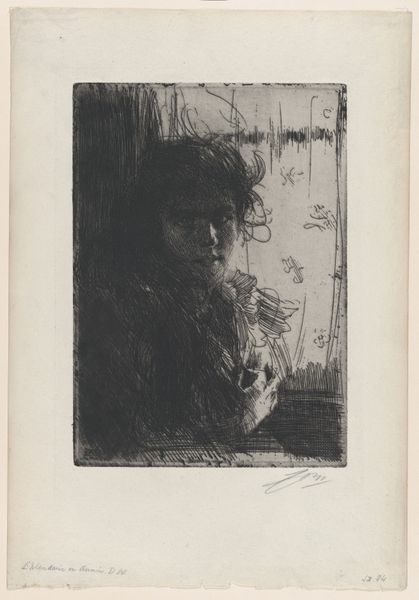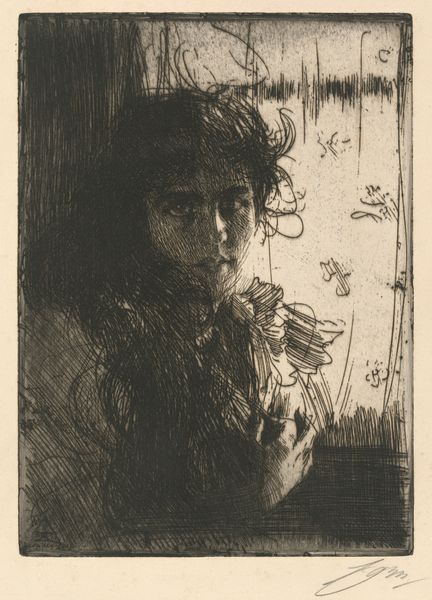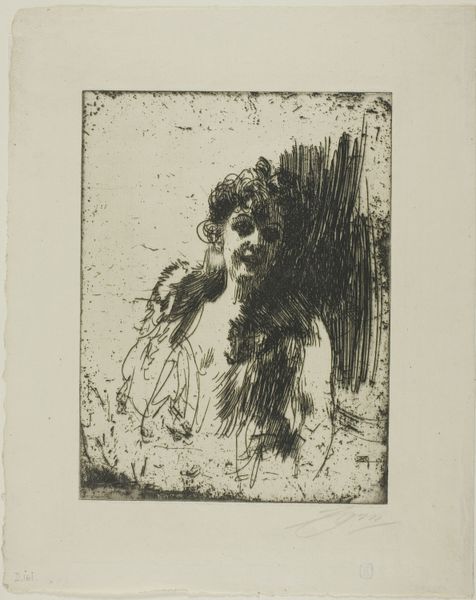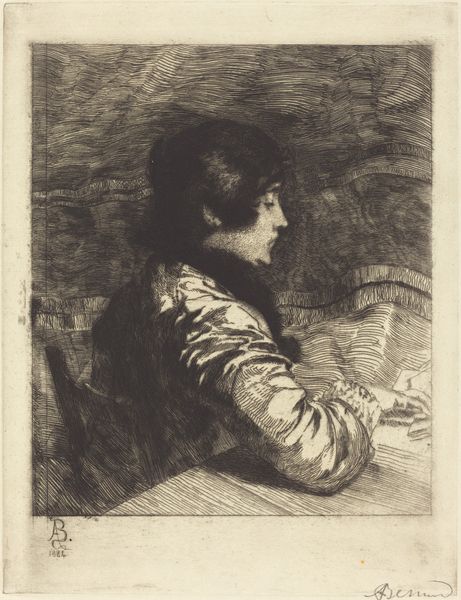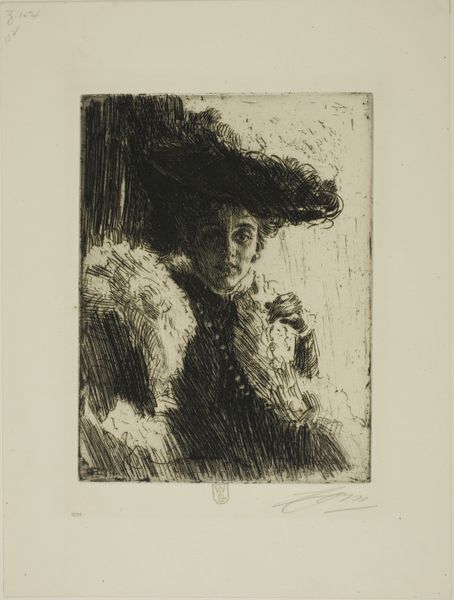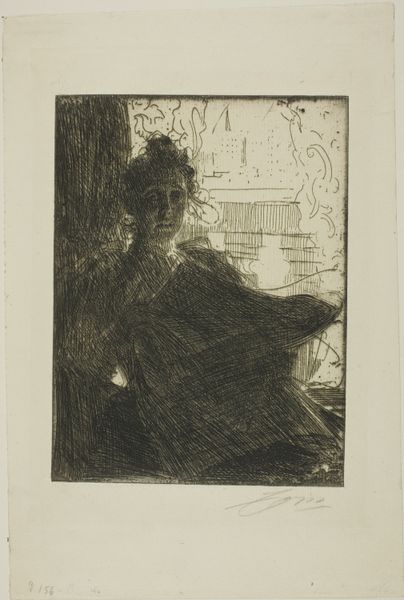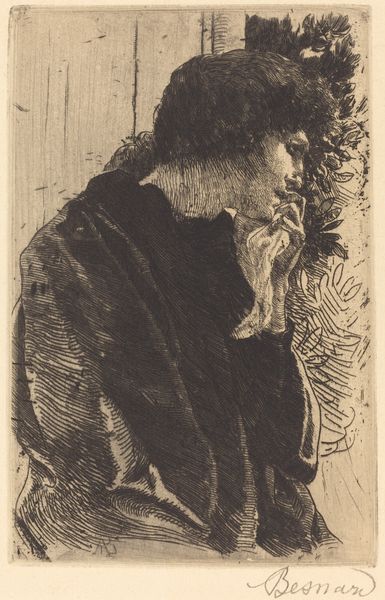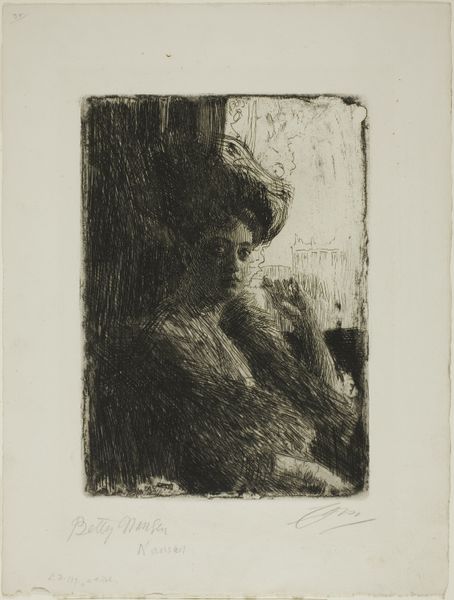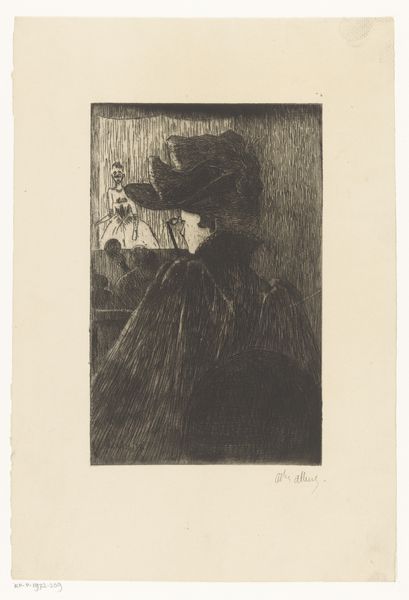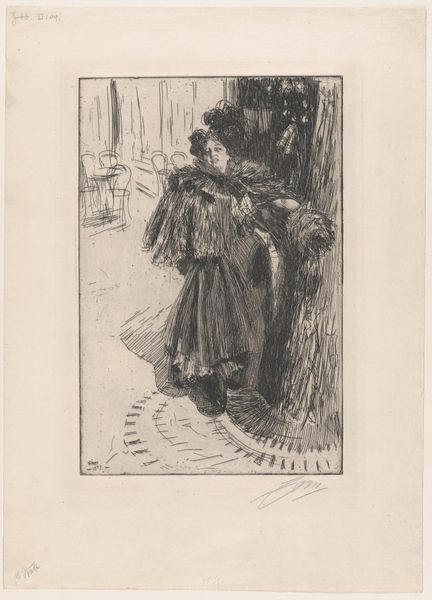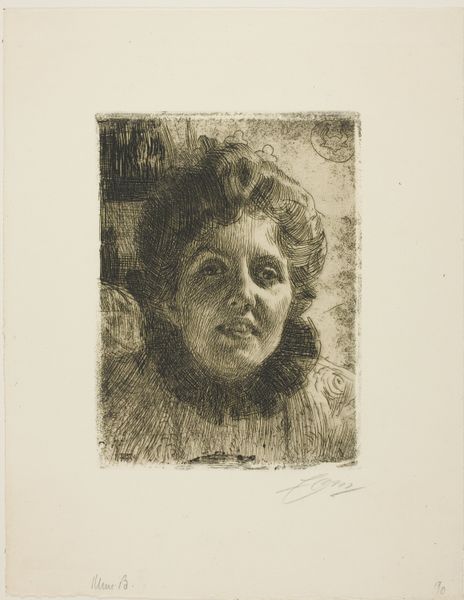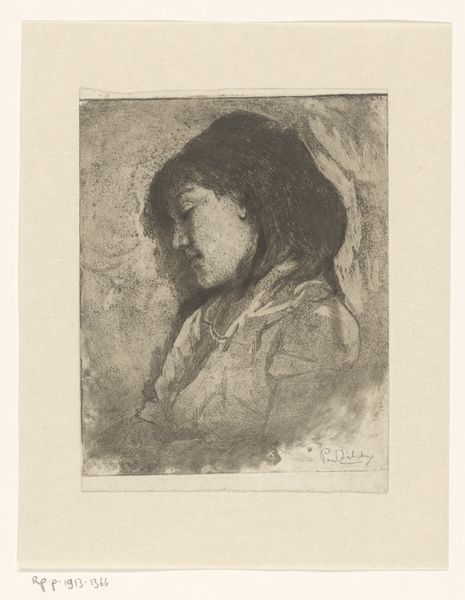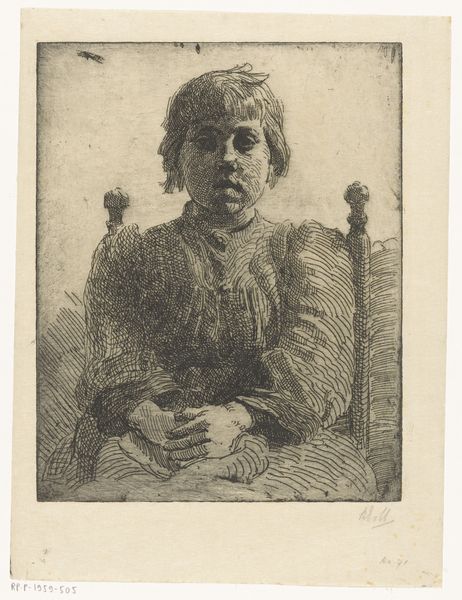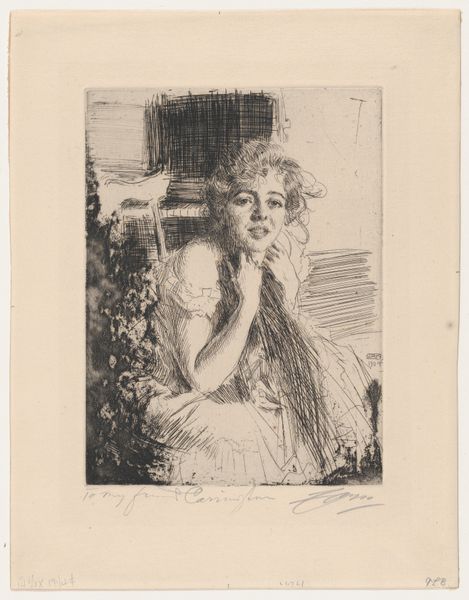
Dimensions: 276 × 199 mm (image/plate); 374 × 283 mm (sheet)
Copyright: Public Domain
Editor: Here we have Anders Zorn's "An Irish Girl or Annie," an etching from 1894. It feels… unfinished, almost raw, in its depiction of this woman. The lines are so active. What strikes you most about this work? Curator: For me, it's the immediacy offered by the etching process itself. Zorn's rapid, almost frantic lines, achieved through acid biting into the metal plate, suggest a directness – an unmediated transfer of his vision. The social context is key, isn't it? Here's Zorn, already successful, engaging with printmaking, a medium historically linked to wider distribution and a less elite audience. Was he challenging traditional boundaries, using his skill for more democratic means, do you think? Editor: That’s an interesting thought, the democratizing potential of printmaking… It hadn't occurred to me. The starkness of the image and the process do highlight a different kind of artistry, almost a working-class aesthetic compared to painting. Curator: Exactly! And look closer at the "Irish Girl." Is she a commissioned subject, or a study of a common person? Zorn isn’t just presenting her, he’s using line, the very material of the etching, to tell a story about labour, production, even consumption of images. He challenges the cult of personality inherent in high art. Think of the labour involved; the plate preparation, the biting, the printing… It all contrasts with the romanticized notion of artistic genius. Editor: So, seeing the process as part of the meaning... that really shifts how I view the final artwork. It feels like he is trying to bring our attention to all the effort and materials that go into creating this image. Curator: Precisely! This etching opens up avenues to understand not just the image, but the very making of the image within its specific social and economic landscape. Editor: This was incredibly helpful! It has expanded my idea of looking beyond the image and focusing on how it came to be. Curator: Agreed! Considering the process allows us to unearth the complex network of artistic intention, social realities and historical contexts surrounding the artwork.
Comments
No comments
Be the first to comment and join the conversation on the ultimate creative platform.
